War in Ukraine: Can we say how many people have died?
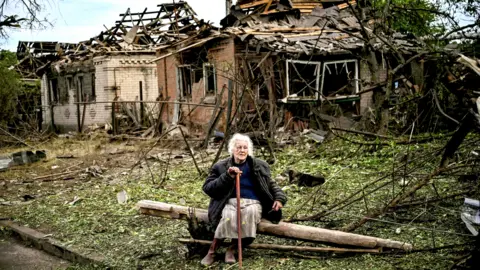 Getty Images
Getty ImagesA Russian air strike on a building in Lysychansk, Luhansk, killed four hiding there. In nearby Severodonetsk, two more died, after a day of Russian shelling. Another died as Ukrainian forces bombarded the outskirts of Donetsk city. A further four were killed when Russian forces opened fire in Sadivska, in the north-eastern Sumy region.
Those who died in these attacks, on a single day in June, are all thought to be civilians.
Deaths like theirs account for more than one out of every three of those recorded in Ukraine since 24 February, according to BBC News analysis of data from the Armed Conflict Location and Event Data Project (Acled) - a US-based non-profit group that records political violence.
Experts say the total number of recorded deaths is likely to be a severe underestimate.
Ukraine and Russia claim the number reaches into the tens of thousands - but their claims do not match up and cannot be independently verified.
To try to understand the human cost of the war, it is necessary to look at a number of sources, including the United Nations, national governments and independent monitors.
Where are people dying?
This map shows where deaths have been reported during the war, up to mid-June.
The southern and eastern areas of Ukraine, along the Russian border where the main ground invasion began, have borne the brunt of the violence.
The data is from Acled, which, in Ukraine, counts individual incidences of violence such as armed clashes or air strikes, and their locations, once confirmed by local media and partner organisations, meaning the number of deaths it reports is more conservative than other sources.

Overall, Acled has reported more than 10,000 deaths in Ukraine since the conflict began.
Mariupol, in the south-east, Kharkiv, in the north-east, and Bilohorivka, in the east, have seen some of the heaviest casualties.
How many civilians have died?
From Acled's totals, BBC News has identified about 3,600 civilian deaths as of mid-June, while the UN has confirmed about 4,700 during the conflict up to the end of the month.
Both say their figures fall far short of the actual number of deaths, because of the challenges in checking information while war is raging.
The UN seeks to verify each death using police, hospital or other civil records.
But Acled's data includes only those associated with a confirmed specific event - and not people who die as a direct result of the war but for other reasons such as hunger or lack of healthcare.
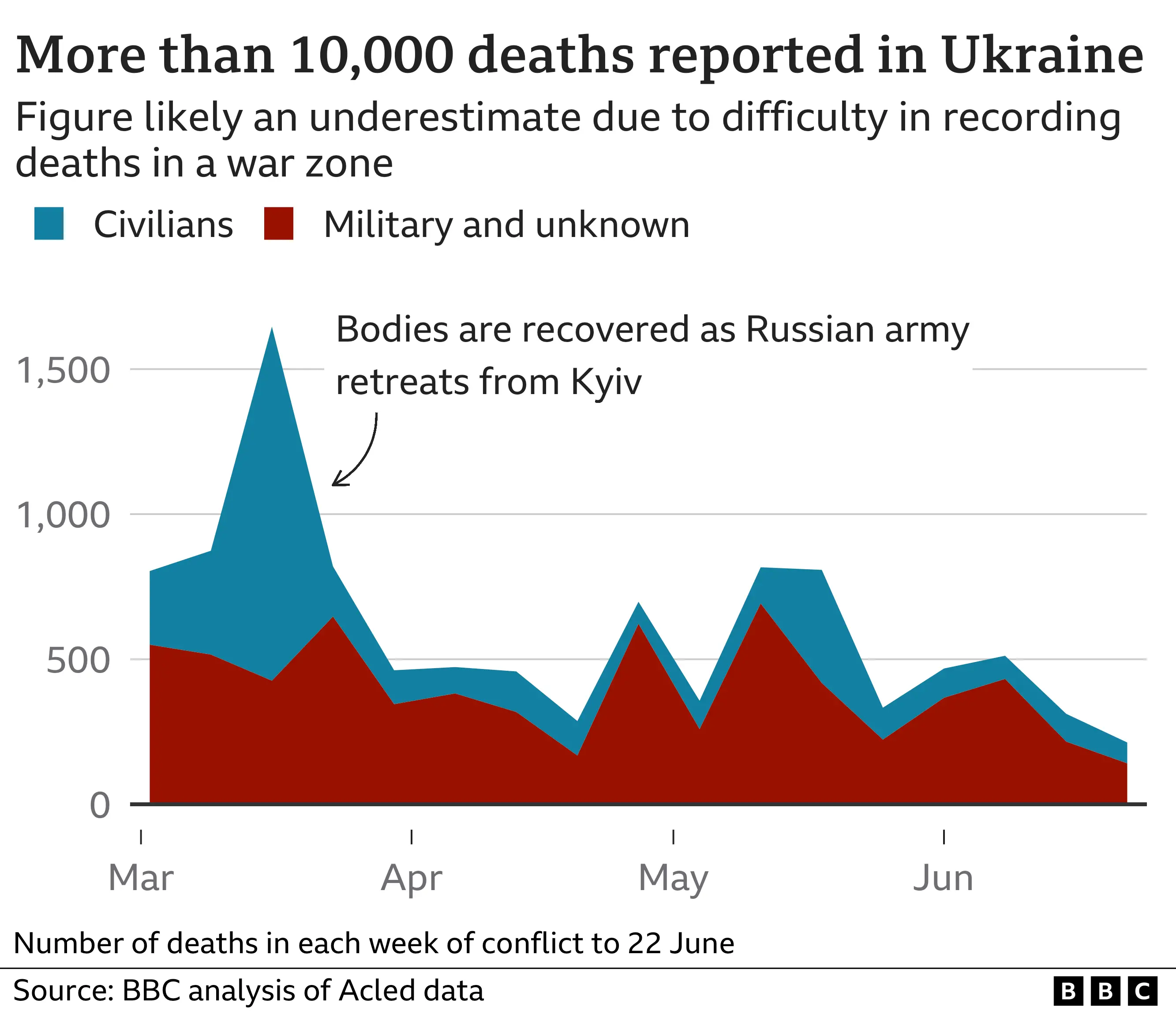
This is particularly important in places such as Mariupol, which spent a long time under siege with many civilians trapped inside.
"In total, we estimate [in addition to the confirmed deaths] that at least 3,000 civilians have died in besieged or contested cities because they couldn't get medical care and because of the stress on their health amid the hostilities," head of the UN Human Rights Monitoring Mission in Ukraine Matilda Bogner says.
How are civilians being killed?
The leading cause of civilian deaths in Ukraine is shelling and air strikes, according to both UN reporting and BBC News analysis of Acled data.
However, almost 1,000 civilians have been killed in attacks at close range, Acled data suggests, many around the time of the siege of the Ukrainian capital, Kyiv.
Under the Geneva Convention and other international treaties, deliberately attacking civilians or the infrastructure vital to their survival is a war crime.
Ukraine's prosecutor-general has accused Russia of thousands of war crimes during the conflict, including the direct targeting of civilians.
Russia has denied all accusations.
How many soldiers have died?
The number of soldiers dying is sensitive information and shapes the story of how the war is going for both sides, Gavin Crowden, of casualty-recording organisation Every Casualty Counts, says.
"That is something that both sides will be very conscious of," he says.
Ukraine has given no official total of soldiers killed during the war.
But in early June, a senior Ukrainian presidential aide told BBC News 100-200 Ukrainian solders were dying in the Donbas region every day.
In April, Russia said it had killed about 23,000 Ukrainian troops.
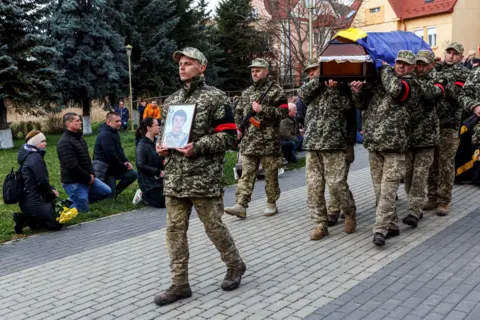 Reuters
ReutersRussia rarely discloses its own troop fatalities.
Its most recent death count was on 25 March, when it said 1,351 Russian soldiers had died since the invasion began.
In April, the UK government said about 15,000 Russian soldiers had died.
Ukraine regularly releases figures on Russian military deaths, claiming about 35,000 Russians had died as of late June.
None of these claims can be verified.
The UN has said it does not consider figures released by those involved in the conflict to be reliable.
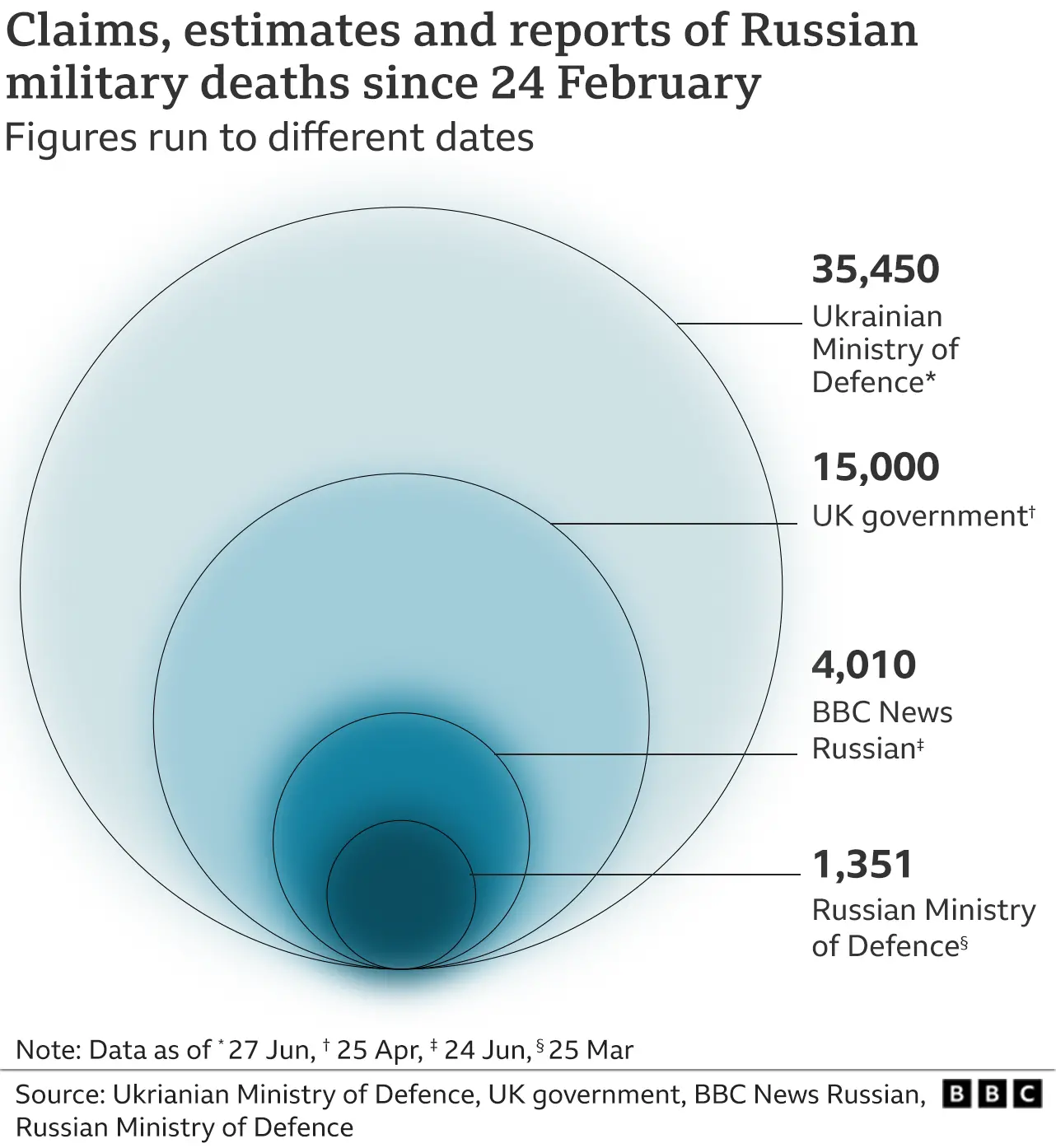
However, at least 4,010 Russian soldiers' deaths have been individually verified by BBC News Russian, which has recorded the names of soldiers who have died since the beginning of the war.
Of those identified, 685 were officers and four were generals.
Most were of lower rank, privates and non-commissioned officers (NCOs).
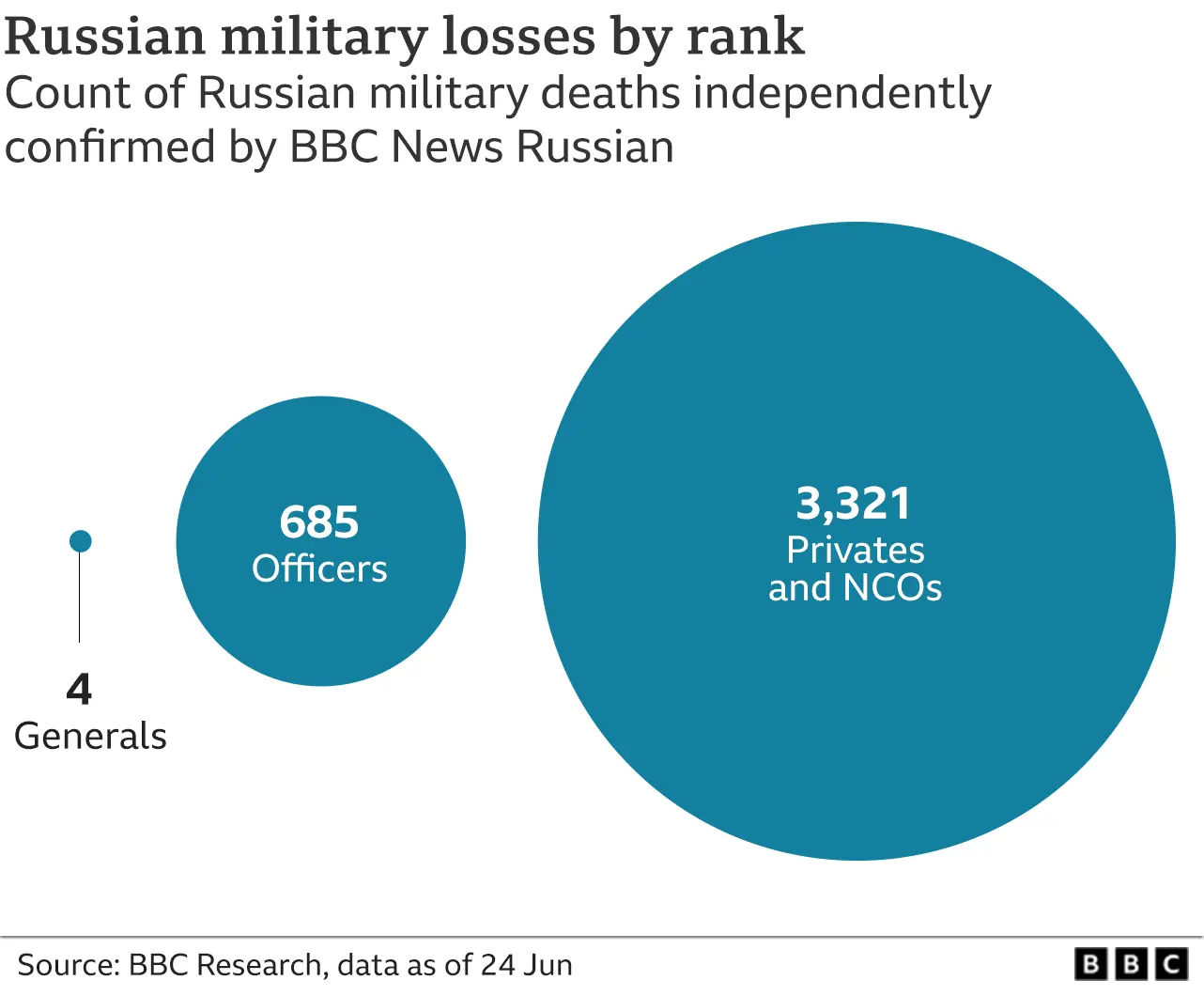
These soldiers, whose bodies were repatriated to Russia, have been identified by name through state media, social media, official reports by local authorities and speaking to people who knew them.
The number of soldiers whose bodies remain in Ukraine, or have yet to be identified, is unknown.
"Every day, the war takes dozens of civilian lives and the lives of combatants," Ms Bogner says.
"If human lives matter, these figures speak for themselves."
Additional data journalism by Jana Tauschinski and Libby Rogers, additional reporting by Kateryna Khinkulova

War in Ukraine: More coverage
- KLITSCHKO: 'Russians dying for Putin's ambitions'
- WEAPONS: What military equipment is the world giving?
- MAPS: Ukraine war in maps
- READ MORE: Full coverage of the crisis
